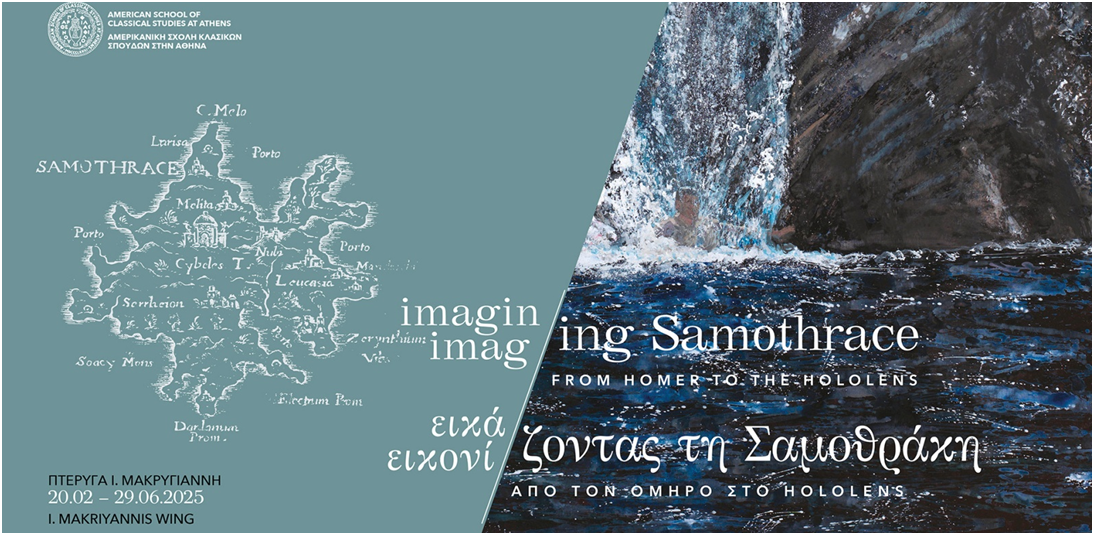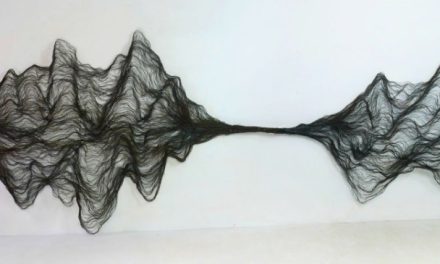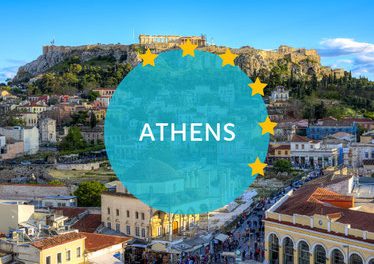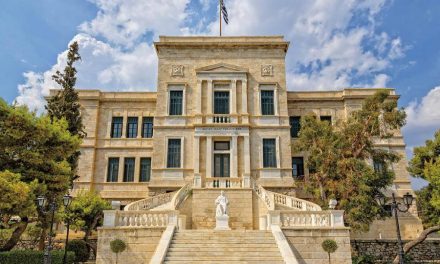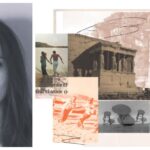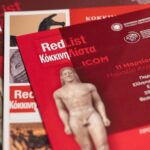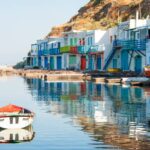The exhibition “Imag(in)ing Samothrace: From Homer to the HoloLens” at the American School of Classical Studies at Athens (20.2-29.6.2025) explores “poetic and visual evocations of Samothrace and its cult of the Great Gods over two and a half millennia, finding the changing perceptions that mark each era and the common threads that remain powerful today. From Homer’s evocative description to the mixed reality of the HoloLens, Samothrace has tapped the imagination of poets, mapmakers, artists, archaeologists, and digital modelers”.
Cover photo: Details from Francesco Piacenza (Italian, 1637–1687), L’Egeo redivivo, o’sia, 1688, Ink on paper, leather-bound, 18.4x23x5.8 cm (American School of Classical Studies, Gennadius Library)(left), Maria Filopoulou, Flow (Fonias Falls, Samothrace), 2011, Oil on canvas, 197×155cm Sotiris Felios Collection, Athens (right)
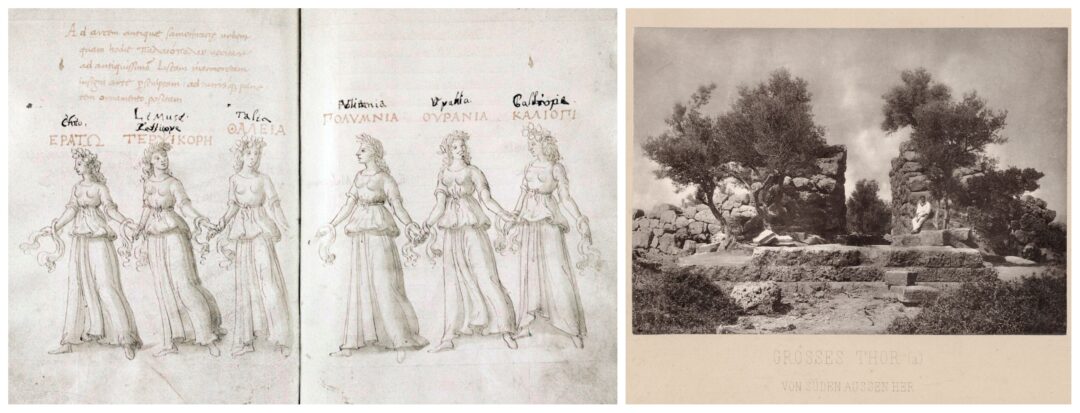
Ciriaco di Filippo de’Pizzecolli (Italian, 1391-1452), copy of Bartolomeo Fonzio (Italian, 1446-1513), Codex Ashmolensis, 15th century. Ink on parchment, 25.5×16.5 cm, Bodleian Library, University of Oxford (left), The Great Gate (Tower A) from the south, 1875, Neue Archäologische Untersuchungen auf Samothrace, American Excavations of Samothrace (right)
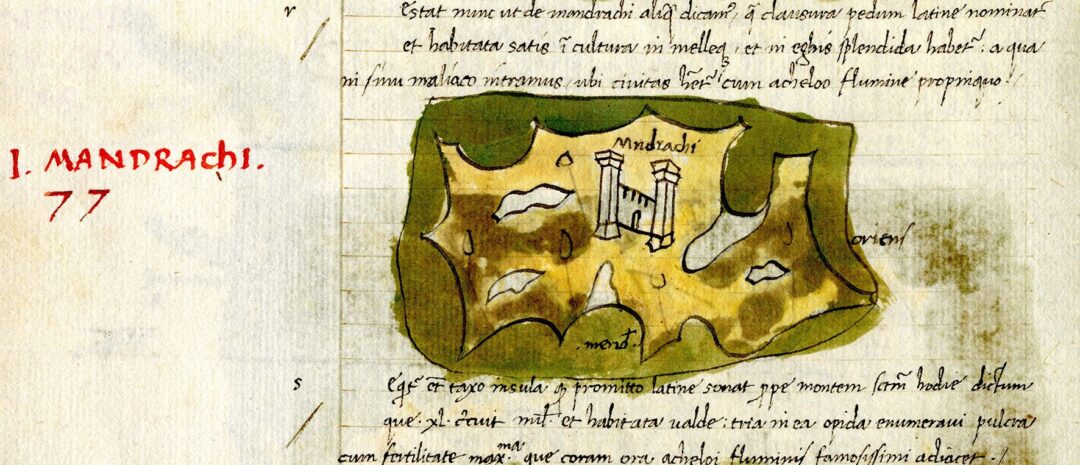
Cristoforo Buondelmonti (Florentine, 1385-1430) Liber Insularum Archipelagi, 1420, Ink and watercolors on parchment, 45.5x30cm, American School of Classical Studies at Athens, Gennadius Library
This multimedia exhibition brings together objects from the 15th to the 21st century, showcasing how artists have depicted their experiences with Samothrace. Highlights include rare Renaissance drawings of Samothracian antiquities, a 15th-century map, archaeological photographs, and modern art works. The exhibition also features new research on the American Excavations Samothrace and its partners, digital animations of the Sanctuary of the Great Gods, and interactive 3D reconstructions of ancient monuments.
The accompanying symposium, “Three-Dimensional Experiences of Ancient Environments”, will be held on February 27th-28th in Cotsen Hall. It will feature presentations of several cutting-edge projects using virtual technologies to bring past worlds to life.
(Source: American School of Classical Studies at Athens)
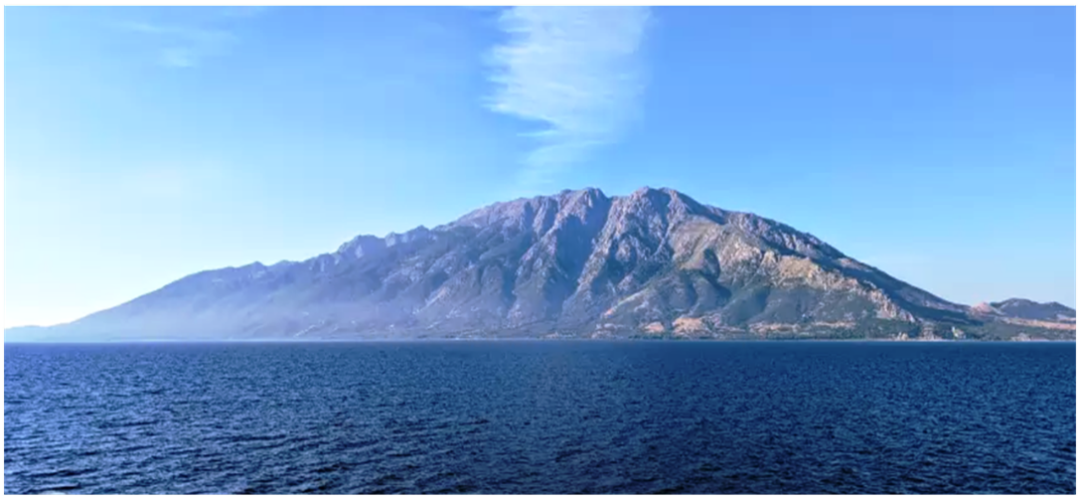
Mt Saos at Samothrace (Source: insamothraki.com )
Samothrace (Samothraki) is a Greek island in the northern Aegean, known for its wild, natural beauty. Referred by mythology as the island of Aeolus, the God of Winds, it is adorned with Mount Saos, the highest mountain in the Aegean (1.611m). Legend says that Poseidon sat atop the mountain to watch the Trojan War. With its rich history, archaeological sites, pristine nature, famous springs, clear streams, cascading rock pools, and beautiful pebbly beaches, the island is a year-round paradise for alternative tourism.
In antiquity, Samothrace was renowned for its mystery cult of the Megaloi Theoi (Great Gods), whose initiation rites, known as the “mysteria” (mysteries), promised protection and spiritual improvement – the opportunity to “become a better and more pious person in all ways.” (Diodorus). The Sanctuary was a sacred space where key events in myth and history unfolded, however the nature of the rites of initiation was held in silent trust by the community of initiated.
The transformative power of the rites is well attested by ancient authors, by the lists of initiates who came to the sanctuary, by the innovative architecture that sheltered the rituals, by the splendid dedications offered to the Gods, and by the humble but crucial detritus of cult—pottery and animal bones—that built up over centuries of use.
(Source: odysseus.culture.gr, NYU Archaeohub)
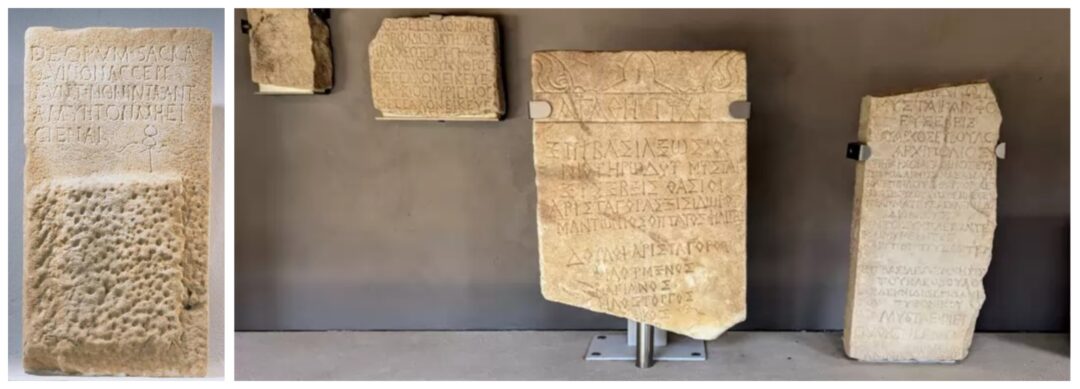
Marble stele inscribed in Latin and Greek which forbade entry of the uninitiated (left) (Source: Hellenic Ministry of Culture), Fragments of lists of the initiated (left), Archaeological Museum of Samothrace (Source: insamothraki.com)
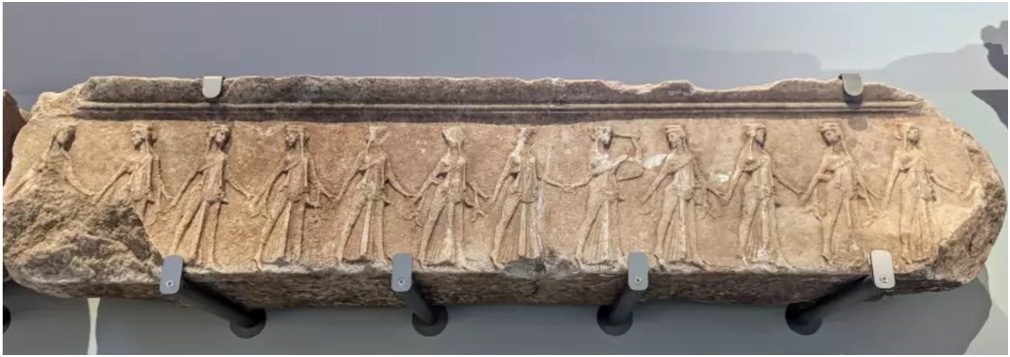
Part of the sculptured marble frieze from the Hall of Choral Dancers (ca. 340 B.C.), Archaeological Museum of Samothrace (Source:.insamothraki.com)
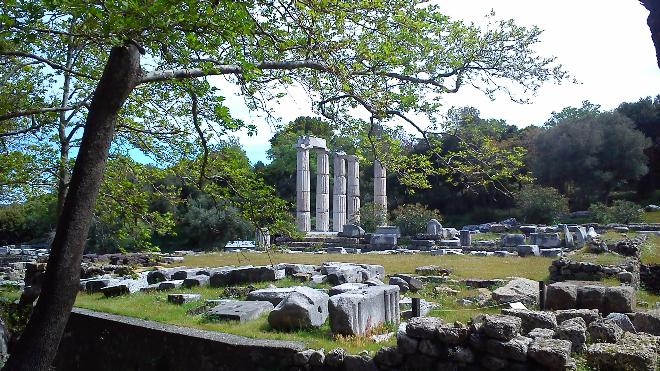
Sanctuary of the Great Gods (Source: Hellenic Ministry of Culture)
The Sanctuary of the Great Gods, where the famous statue of Nike of Samothrace (Winged Victory) was discovered in 1863, spans about 12 acres, 400 meters from the island’s NW coast. Key structures include the Hall of Choral Dancers (340 BC), the Altar Court (340-330 BC), the Hieron (325-150 BC), the Dedication of Philip III and Alexander IV (323-317 BC), and the Rotunda of Arsinoe II (288-270 BC). Religious activity dates back to the 7th century BC, with monumental buildings starting in the 4th century BC, funded by the Macedonian royal family. The sanctuary, which attained its greatest glory in the 3rd and 2nd centuries BC, was abandoned towards the end of the 4th century AD. Archaeological research has provided a picture of its development, although neither archaeological data nor literature is able to penetrate the veil of secrecy that covers the mysteries.
(Source: odysseus.culture.gr)
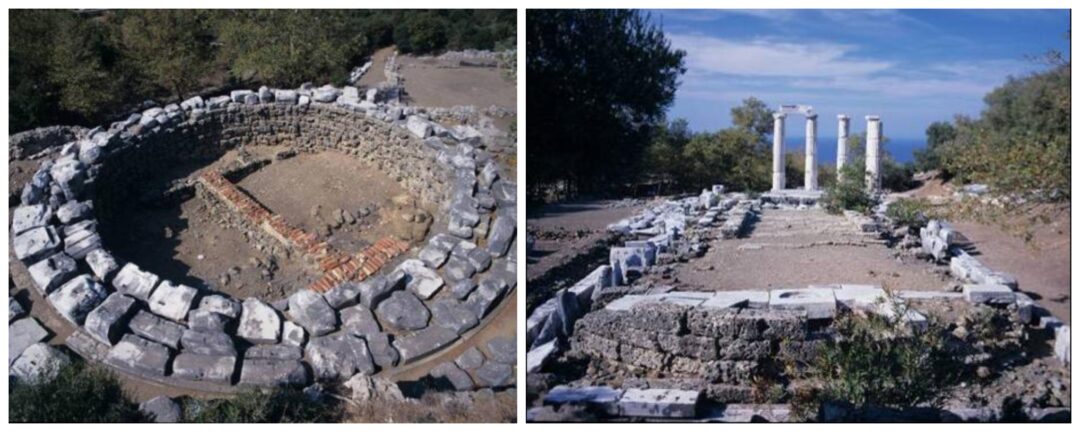
View from the Southeast of the actual state of the Rotunda of Arsinoe II (288-270 B.C.) (left), The Hieron (325-150 B.C.) from the South (right) (Source: Hellenic Ministry of Culture)
Cyriacus of Ancona recorded remains in the Samothrace sanctuary in 1444. Archaeologists and experts from France, Germany, Greece and Austria have contributed to its history. The American team, sponsored by the Institute of Fine Arts at New York University, began its work at the Sanctuary in 1938. James R. McCredie led the excavations for 50 years, from 1962 to 2012. In 2012, Emory University joined as a sponsor, with Bonna D. Wescoat now leading the team under the American School of Classical Studies and the 19th Ephoreia of Antiquities of Evros. The team includes archaeologists, conservators, geologists, geomorphologists, geographers, numismatists, and architects, as well as students in all of these fields, and is particularly interested in using digital reconstructions and animations to understand the passage of the pilgrim within the Sanctuary, which in turn informs the understanding of the nature of the experience of initiation.
(Source: NYU Archaeohub)
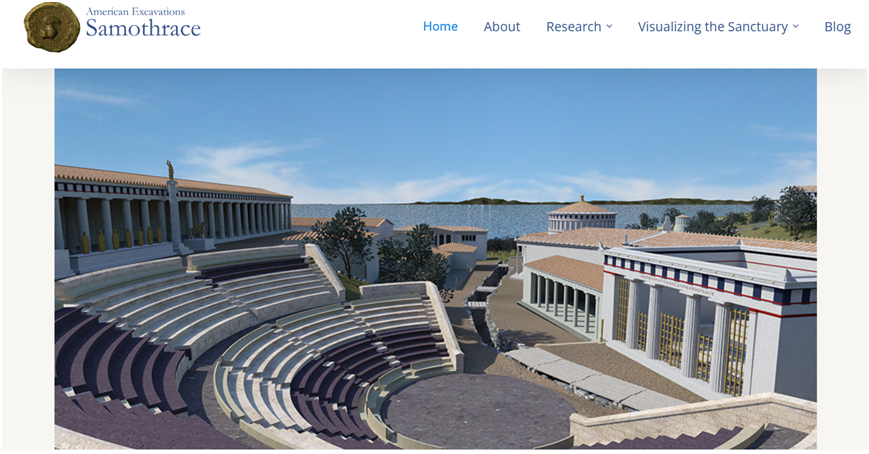
3D digital reconstruction of the archaeological site of Samothrace by www.samothrace.emory.edu/
The Archaeological Museum of Samothrace is located near the entrance to the archaeological site in Palaiopoli, and reopened to visitors in July 2024 after an extensive restoration. Hall A showcases full-scale reconstructions of major buildings in the center of the sanctuary, including the Rotunda of Arsinoe, the Hieron, and the Altar Court. The exhibition also features a video offering a walk through the 3D digital reconstruction model of the Sanctuary. To view the video, click here.
(Source: www.samothrace.emory.edu/)
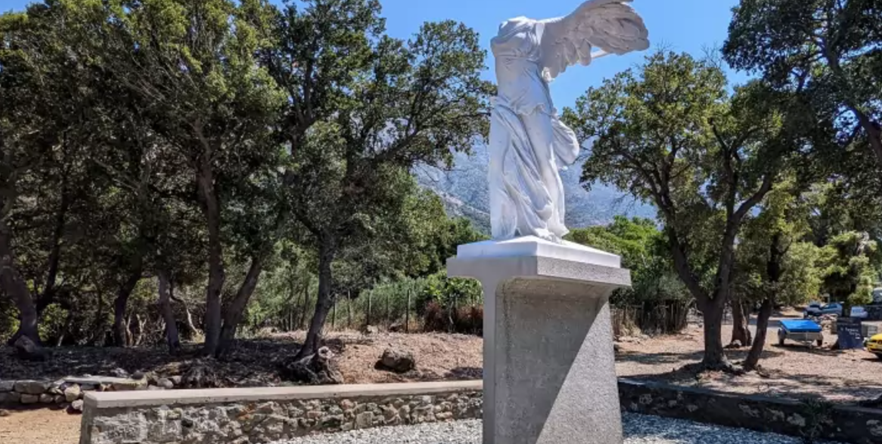
In autumn 2021, a copy of the statue of Nike of Samothrace was placed in front of the museum. The original is exhibited today at the Louvre Museum. The copy matches the size of the original and was carved from Thassos island marble by a machine, using the model provided by the Louvre Museum. (Source: insamothraki.com)
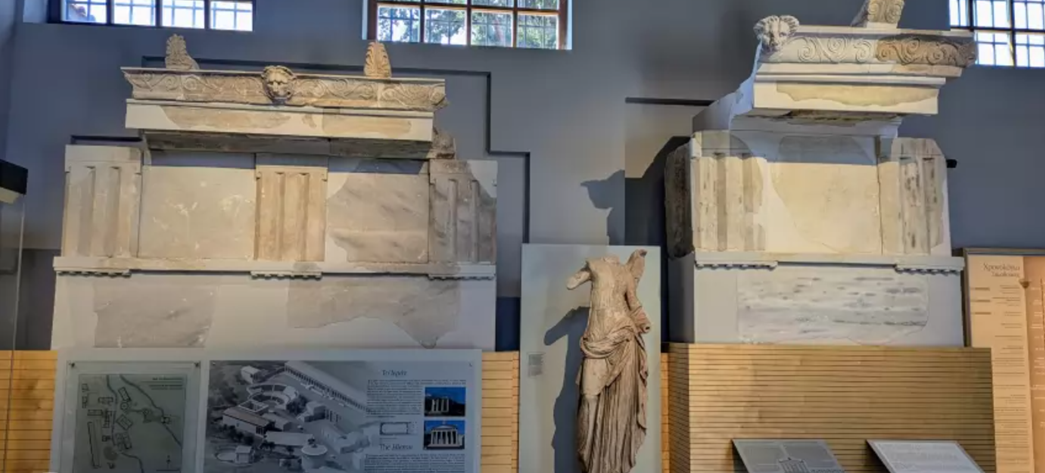
Room A of the Archaeological Museum of Samothrace with fragments and reconstructions of the most important buildings of the Sanctuary of the Great Gods (Source: insamothraki.com)
Samothrace offers stunning natural surroundings, with rich vegetation among lakes and rivers that will leave a lasting impression on the visitors. What makes the northern part of the island truly unique is its microclimate, which favors a diverse and abundant flora. The higher altitudes are dominated by planes, oaks, cedars, and chestnut trees, while the lower areas resemble a jungle of shrubs, with over 20 endemic species growing on the island. Where the land is suitable for grazing, the wind carries the aromas of nature: thyme, oregano, and other herbs.
Hundreds of crystal-clear streams flow from Mount Saos, rushing through the forests all the way to the sea. Along the way, they form waterfalls and over 100 stone basins, known as “vathres”, which serve as the island’s landmarks.
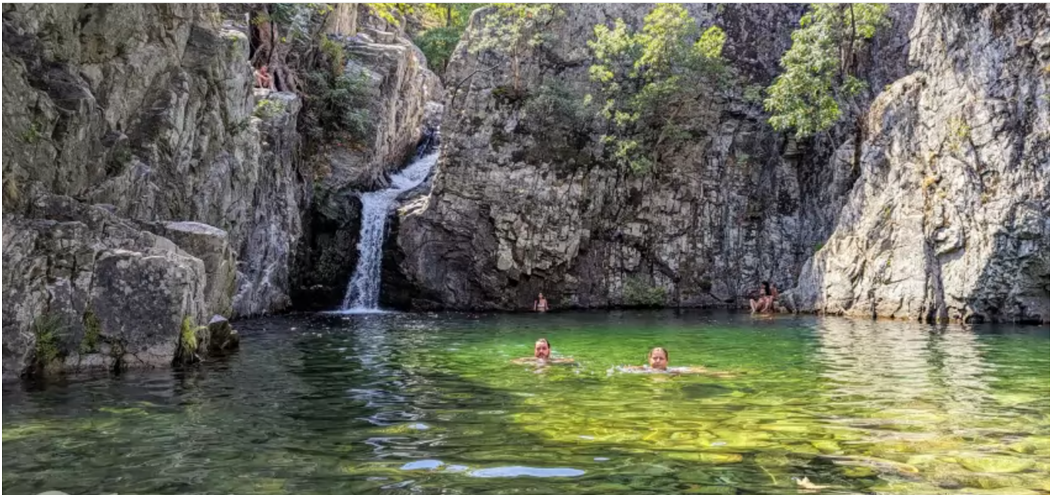
The second waterfall and “vathra” of Fonias river (Source: insamothraki.com)
The island is dotted with numerous rugged, mostly pebbly beaches, some of which are accessible only by boat. The beach of “Kipos” (Garden), with its black and gray shiny pebbles, stands out. In the south, lies the only sandy beach – “Pachia Ammos” (Thick Sand) – which is the most popular. The fascinating sea floor and abundant underwater life are visible through the crystal-clear waters.
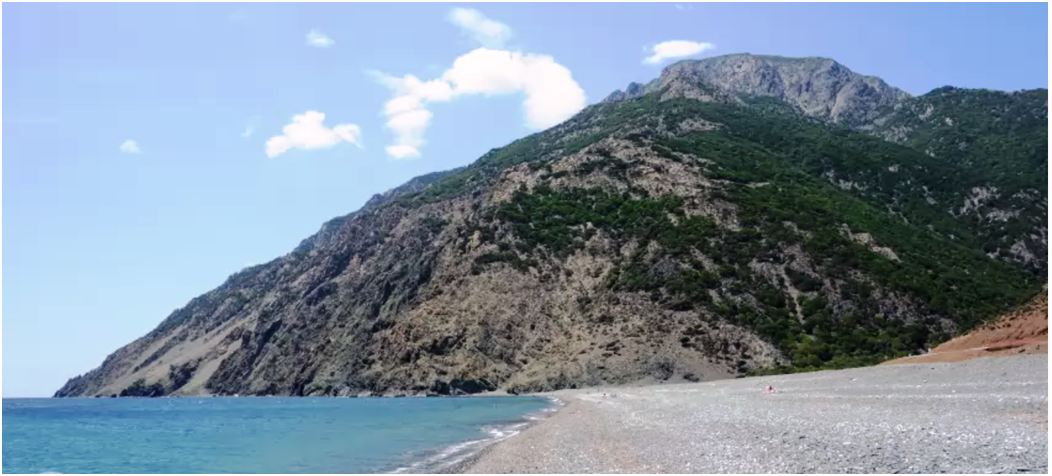
Kipos beach stretches for over a kilometer, with dark-colored pebbles, the result of past volcanic activity, and towering granite and basalt cliffs rising abruptly from the water (Source: insamothraki.com)
The imposing mountainous heart of the island, combined with its pristine nature, offers everything explorers and adventure lovers could wish for. Activities such as crossing gorges, trekking, mountaineering, mountain biking, paragliding, rafting, kayaking, and diving are just some of the options available for those seeking an active experience.
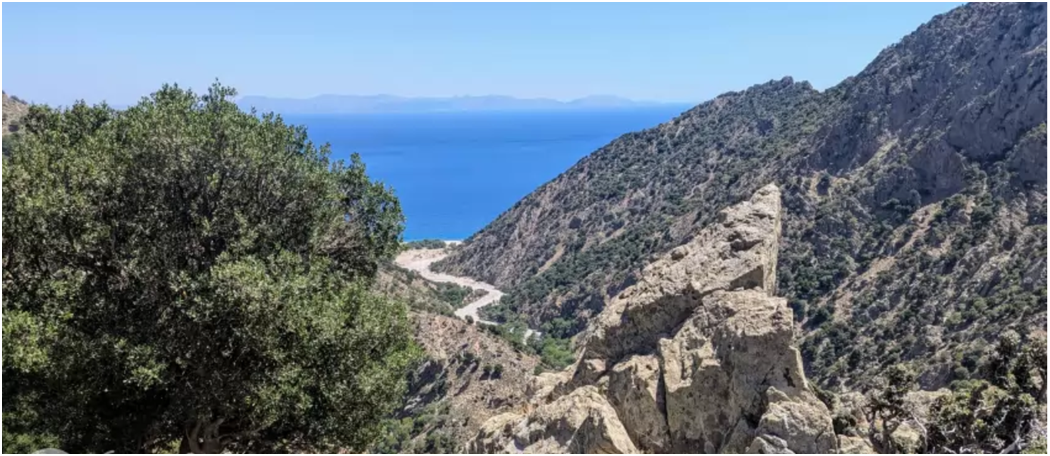
Trekking from Panagia Krimnniotissa to Vatos Beach (Source: insamothraki.com)
Mother Nature has also been generous to Samothrace in geothermal wealth: sulfurous therapeutic thermal springs welcome visitors to the village of Therma and its spa facilities, where they can seek and find health and wellness.
(Source: visitgreece.gr, insamothraki.com)
Read also: Greece’s Mesmerizing Waterfalls
I.A.
TAGS: ARCHAEOLOGY | EXHIBITIONS | SAMOTHRACE | TOURISM

